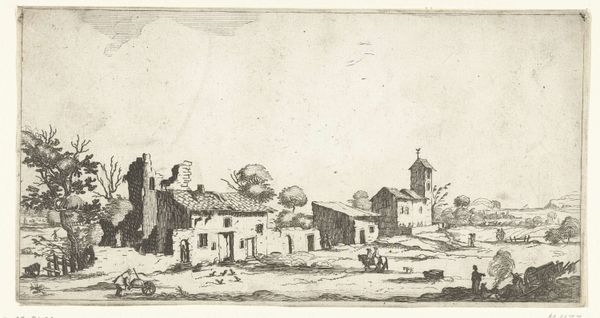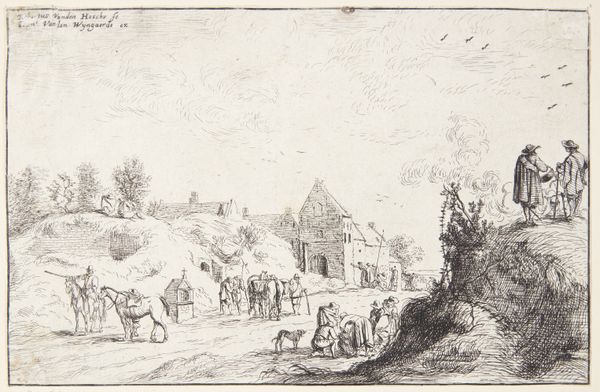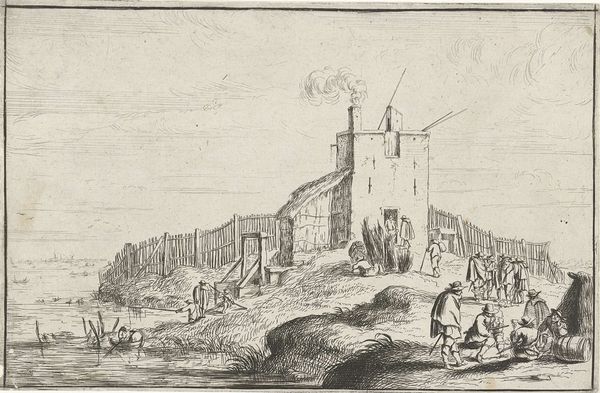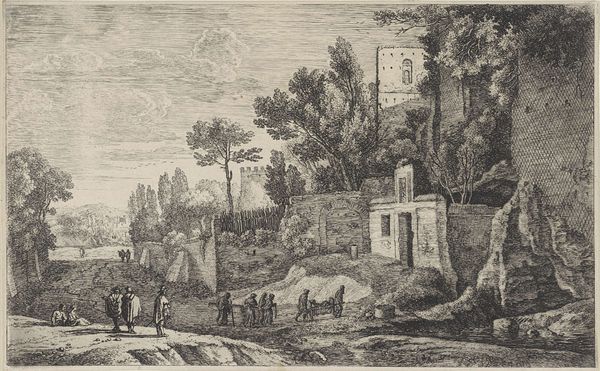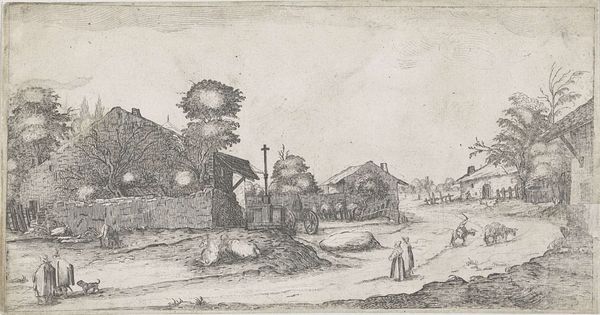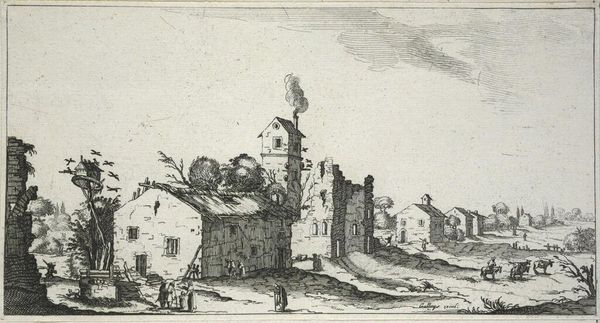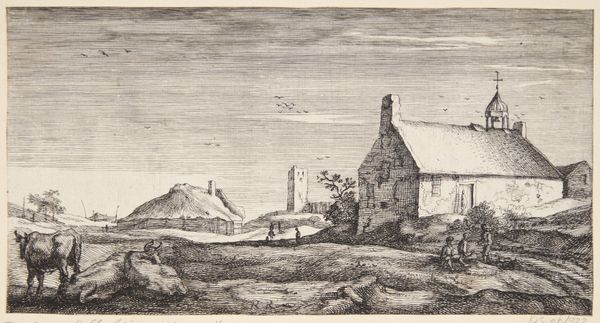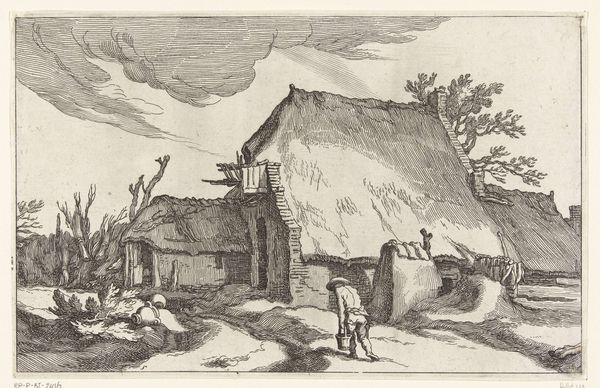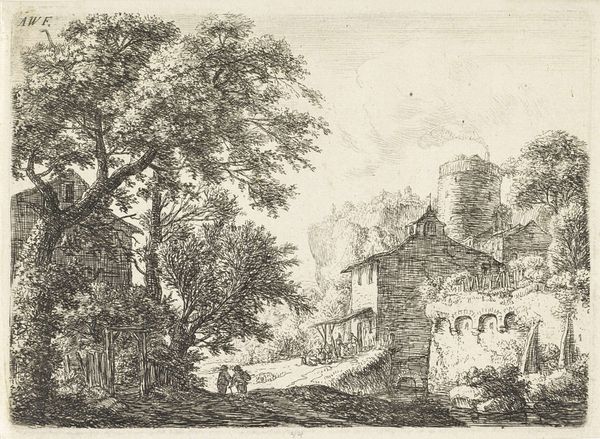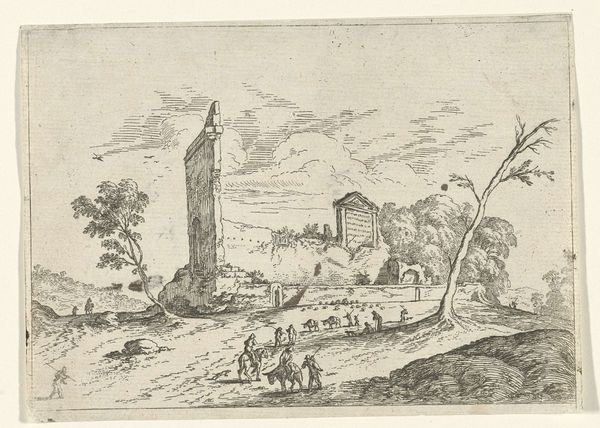
print, etching
#
baroque
#
dutch-golden-age
# print
#
etching
#
landscape
#
figuration
#
genre-painting
#
realism
Dimensions: height 70 mm, width 113 mm
Copyright: Rijks Museum: Open Domain
Curator: Look at the starkness in this work, “Landschap met boeren bij het oogsten,” or “Landscape with Farmers Harvesting," attributed to Jan van Ossenbeeck and created sometime between 1647 and 1674. It is a simple print done through etching. The entire landscape feels barren. Editor: Barren, yet busy. I find it fascinating to see what appears as rudimentary farming happening amongst Roman ruins. Notice how lightly etched it all is? It feels ephemeral, fragile even, when so much physical labor is involved. You can sense the repetitive pressing of the plate leaving its trace upon the paper, mass produced in someone’s studio, no doubt, to capture a fleeting moment of human existence, toil, and ancient collapse. Curator: Right! It certainly speaks to the temporality of empire in comparison to the immediate and enduring work of cultivating the land. Even in its rendering it holds an intriguing symbolic tension. The landscape speaks of abundance even if this reality might be difficult. Notice that behind these ordinary activities sits evidence of past civilization. Editor: These are laborers making do amongst the remnants of something once grandiose. Think of the acid and the burin repeatedly biting into the plate, the back and forth needed to achieve this level of atmospheric depth, each etching carrying out repetitive gestures which mirror the farmers toil, or, even the slow ruin of these classical structures, being returned to the very ground that supported them for millennia, and consumed, like nutrients, to begin life again. What better demonstration is there than this to display cycles of production? Curator: Yes, this speaks so well of the ever-turning wheel, and how people locate themselves within that movement, even unconsciously. Here, ruins are not mere set dressing; they are potent signifiers. Editor: They offer a solid, material comparison of temporal scales and values. To etch is not the same as to till but perhaps, with this little print, van Ossenbeeck hints that these endeavors might hold some equivalent in his culture and even his life. It's humbling. Curator: Absolutely, the wheel is constantly turning, always revealing layers of what came before. Editor: A worthwhile reminder. Thanks for guiding us.
Comments
No comments
Be the first to comment and join the conversation on the ultimate creative platform.
